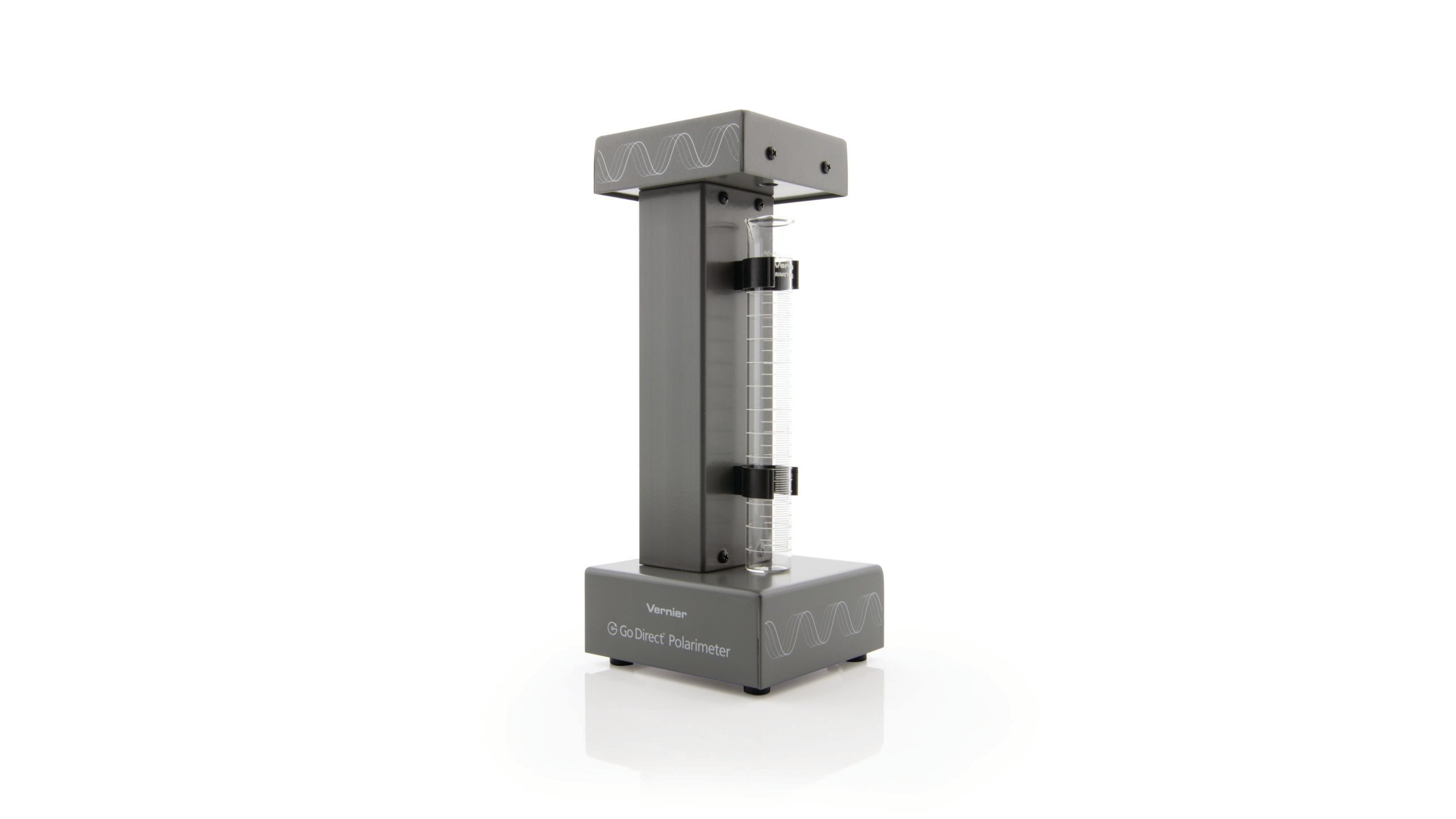Troubleshooting
General: Press the power button on the sensor to turn it on. Connect your sensor as described in the Getting Started instructions for your device.
- Primary Test: Make sure you are using the latest version of Instrumental Analysis app.
⚬ If using LabQuest 3, make sure you are using version 3.0.3 or newer.
⚬ If using LabQuest 2, make sure you are using version 2.8.7 or newer.
There are four free experiments available our website: www.vernier.com/product/gdx-pol. We highly recommend starting with one of these experiments to master the technique.
Additional Troubleshooting
- What is the sample volume required by your Polarimeter?
- What does the illumination value on the Polarimeter mean and what are its units?
- Do you have experiments written for the Polarimeter?
- I'm not getting accurate results with your Polarimeter.
- My Go Direct Polarimeter does not complete calibration.
Specifications
- Accuracy (optical rotation measurements): +/-1 degree
- Sensitivity: typically up to OD 2
- Light Source: LED
- Wavelength (nominal): 589 nm
- Connections:
⚬ Wireless: Bluetooth® v4.2 (wireless range 30 m unobstructed)
⚬ Wired: USB 2.0 full speed - Battery: 650 mAh Li-Poly
⚬ Battery Life (single, full charge): ~10 hours continuous data collection
⚬ Battery Life (lifetime): 2 – 5 years (typical)
Calibration
Calibrate? Yes. Because you are taking relative measurements of angle, you should perform a new calibration each time you connect the Polarimeter.
- Connect the Go Direct Polarimeter according to the Getting Started instructions for your device.
- Pour distilled water or the appropriate solvent in the Go Direct Polarimeter cell to a height of 10 cm. ⚬ It is important to read the height to the nearest 0.1 cm. Read to the bottom of the meniscus.
- Place the cell in the Go Direct Polarimeter, then follow the appropriate steps:
⚬ Instrumental Analysis
▸ Click or tap Finish Calibration.
▸ When the polarimeter is ready, click or tap Done.
⚬ LabQuest App
▸ Select Calibrate from the Sensors menu.
▸ Tap Calibrate Now and follow the instructions on the screen.
▸ When the polarimeter is ready, tap OK.
Battery Troubleshooting
- If the sensor won’t turn when on its own, but does when connected to a USB power source, try charging the sensor for at least 2 hours using a known-to-work USB cable.
- If you continue to have trouble, try swapping the battery with a working sensor to see if the problem follows the battery or stays with the sensor.
⚬ If the problem stays with the sensor, the battery is probably not the issue.
⚬ If the problem follows the battery, the battery has likely reached its end of life. - If the battery is indeed at the end of its life, the battery should be replaced.
Go Direct® 650 mAh Replacement Battery (GDX-BAT-650 ) - See How do I remove or replace a Go Direct battery? for more information.
Rechargeable batteries are covered by a one-year warranty.
Batteries should last two to five years in typical use.
Related Products
- Micro USB to USB-C Cable (
CB-USB-C-MICRO ) - Go Direct® Charge Station (
GDX-CRG ) - Chemical Polarimeter Accessory Cells (
CELLS-POL ) - Polarimeter (Chemical) (
CHEM-POL )
Replacement Parts
- Go Direct® 650 mAh Replacement Battery (
GDX-BAT-650 ) - Micro USB Cable (
CB-USB-MICRO )

